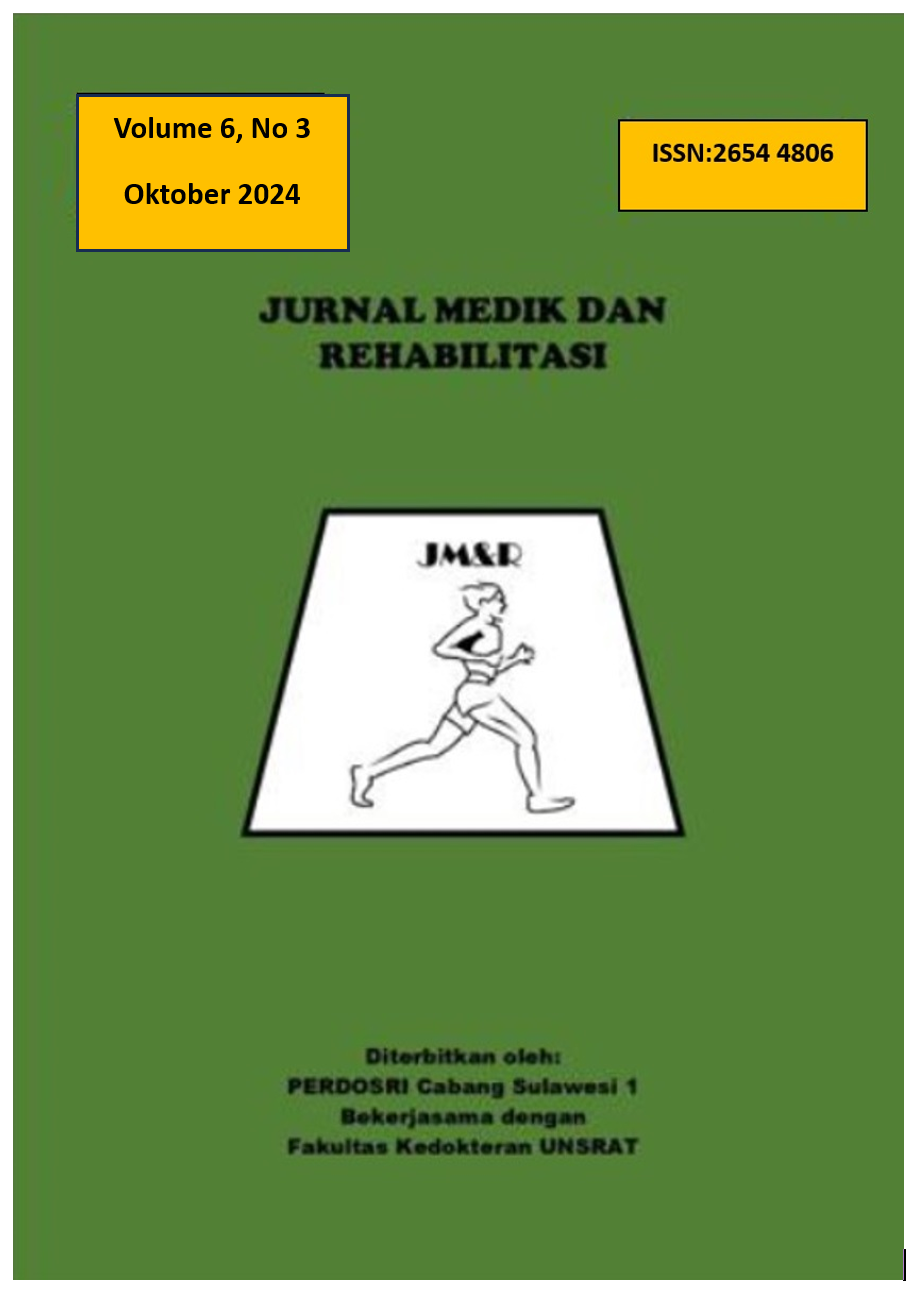Medical Rehabilitation in Patient with Cerebral Palsy Spastic Diplegic GMFCS II, MACS II, CFCS V, EDACS III
Abstract
Abstract : Cerebral Palsy (CP) is a group of permanent disorders of the development of movement and posture,
causing activity limitation, that are attributed to nonprogressive disturbances that occurred in the developing
fetal or infant brain. CP is the most common cause of childhood disability. The incidence is 2- 2.5/1000 live
births. Some affected children do not survive and the prevelance varies between 1-5/1000 babies in different
countries. In Indonesia, CP prevalence is 1- 5/1000 live births where as there are around 5.000-25.000 births
diagnosed with CP every 5 billion live births per year in Indonesia. The risk factors fall into the following
categories: preconception, concerning the broadly defined health and living conditions of the mother; prenatal,
which are related to the course of pregnancy; perinatal; as well as risk factors in the neonatal and infant period.
Children with CP present with three types of motor problems. The primary impairments of muscle tone,
balance, strength and selectivity are directly related to the damage in the CNS. CP may manifest itself
differently as the child ages. The modified neurologic classification system divides patients into three catagories
: spastic (pyramidal) CP, Dyskinetic (extrapyramidal) CP and mixed type (combination) CP. Early
identification of children who have CP allows for early therapeutic intervention and screening for associated
condition. The treatment of a child with CP requires a multidisciplinary approach. Once the diagnosis is made,
the infant or child should be evaluated by a comprehensive rehabilitation team. Rehabilitation of the children
with CP aims to reach and maintain optimal physical, sensory, intellectual, psychological and social function.
It includes providing the tools and individual needs to gain and maintain independence and self determination.
Children with CP often change overtime, due either to growth and development treatment. Various means of
determining change may be employed. Subjective evaluation that ask the child, parent or therapist his or her
opinion are most commonly used. Occasionally, more quantified techniques are employed, particularly in
research settings, although clinical use also occurs.

